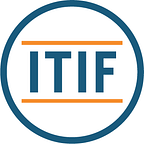The Indonesian High-Tech Helping Hand
By Jaci McDole
Gone are the days of wood and leather cosmetic limbs. Innovators worldwide work to improve differently abled individuals’ lives through biotechnology: integrating technological advancements with life-sciences research and development (R&D). Among these innovators are researchers at Indonesia’s Bandung Institute of Technology (ITB) who developed a more affordable, functional, and high-tech bionic arm called K22 BP/EL.
For centuries, cosmetic prostheses merely took the place of missing limbs while providing little to no functional purpose. With the rise of modern biotechnological innovation, differently abled persons can choose prostheses that are both cosmetic (offering a close-to-natural limb appearance) and functional. Although modern prosthetics cannot duplicate the full speed and dexterity of a natural human hand, both body-powered (operated by harness-and-cable-type technologies) and myoelectric (operated by motors, batteries, and electrical signals) prostheses offer users far greater functionality than existing alternatives. Meanwhile, the field of neuroprosthetics — prostheses controlled by the human brain — is still in its infancy, yet showing great promise.
Approximately 16 percent (1.3 billion) of the global population lives with some form of disability, and the World Health Organization expects this number to increase as people live longer. In addition to those persons born with congenital limb differences, a report from Prosthetics and Orthotics International stated, “In 2017, 57.7 million people were living with limb amputation due to traumatic causes worldwide.” Traumatic causes include amputations due to falls, injuries, or mechanical forces. Most of these amputations occurred in East Asia and South Asia.
Differently abled persons often face greater socioeconomic adversity, such as less education, poor health, inadequate transportation access, lower wages, reduced job opportunities or unemployment, a lack of access to resources and assistive technologies, and increased poverty rates. Compounding upon these burdens, smaller cosmetic prostheses may cost $3,000 or more, whereas advanced functional prosthetic limbs may reach upwards of several hundred thousand dollars. To wit, prostheses frequently need to be replaced due to wear and tear or human growth.
To address these challenges, IBT professor Wildan Trusaji and his team developed the K22 BP/EL bionic arm to provide differently abled persons with more useful and affordable prosthesis options. The “K” in the name refers to Karla Bionics, the start-up company founded by the design team and ITB’s technology transfer office (LPiK), whereas “22” refers to the year (2022) the product was introduced. “BP/EL” stands for body-powered/electric-powered, indicating the design is a combination of body-powered and myoelectric operability. The prosthetic arm sells for under Rp. 10 million (approximately $650).
The finger-setting mechanism of the device utilizes a whippletree mechanism — a pivot mechanism used to distribute force evenly through linkages — and provides users an intuitive and versatile grip feature. Straps behind the wearer’s other hand and arm help control the prosthetic. During the 2022 International Cybathlon Challenge, the team put their design to the test, taking third place in the prosthetic arms race where competitors “complete daily tasks using the advanced technical assistance system and technology available.” The team’s main competitor is a drummer, and he worked with Karla Bionics for several years through the product’s development process.
Although most healthcare professionals tailor the prosthesis, users still face serious discomfort or problems. Frequently the socket — the part of the prosthetic connecting it to the body — causes skin irritation or breakdown, excessive sweating, pain, blood flow obstruction, osteoarthritis, and other problems. To remedy this, the K22BP/EL team designed the arm sockets in a fashion reminiscent of running shoes, making them more adaptive and comfortable.
Additionally, the more tailored components are, the more expensive a prosthesis is. The team reduced costs by using PVC and applying the thermoforming principle: pressing hot plastic into a pattern to form a mold. This provided significant advantages, as the materials are lightweight and durable. Although Wildan and his team have been pleased with their accomplishments, they look forward to improving upon the technology.
To that end, the LPiK and intellectual property (IP) rights play a significant role in the company’s continued innovations. According to the LPiK’s website, Karla Bionics is only one of the university’s 193 start-ups. The LPiK maintains a portfolio of more than 920 IP rights (patents, trademarks, copyrights, etc.) and has enabled at least 205 innovations. Licensing, technology transfer, and IP rights enable ITB and its start-ups to financially support continued R&D while ensuring their innovations can be brought to market.
From Indonesia to Nigeria and Estonia to Chile, innovation can and does happen everywhere. However, innovation cannot truly flourish and reach those it is intended to help without the support of robust IP rights. This is especially true in R&D-intensive industries, including biotechnology.
Differently abled persons have hope for affordable and improved functional prosthetics because of researchers and innovators such as the Karla Bionics team, who are enabled by IP rights and a technology transfer office. Just as health care and biotechnology go hand-in-hand, so do IP rights and innovation.
